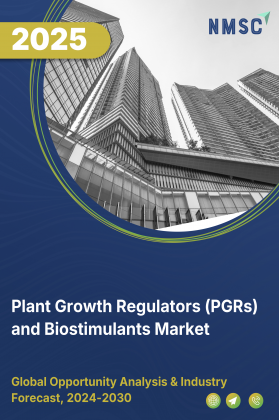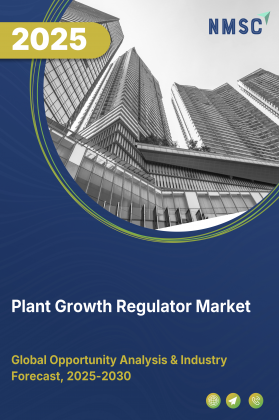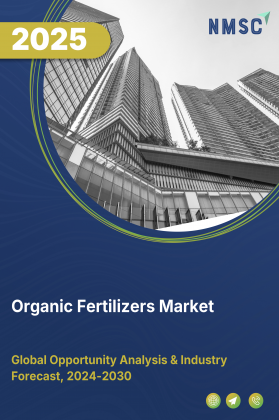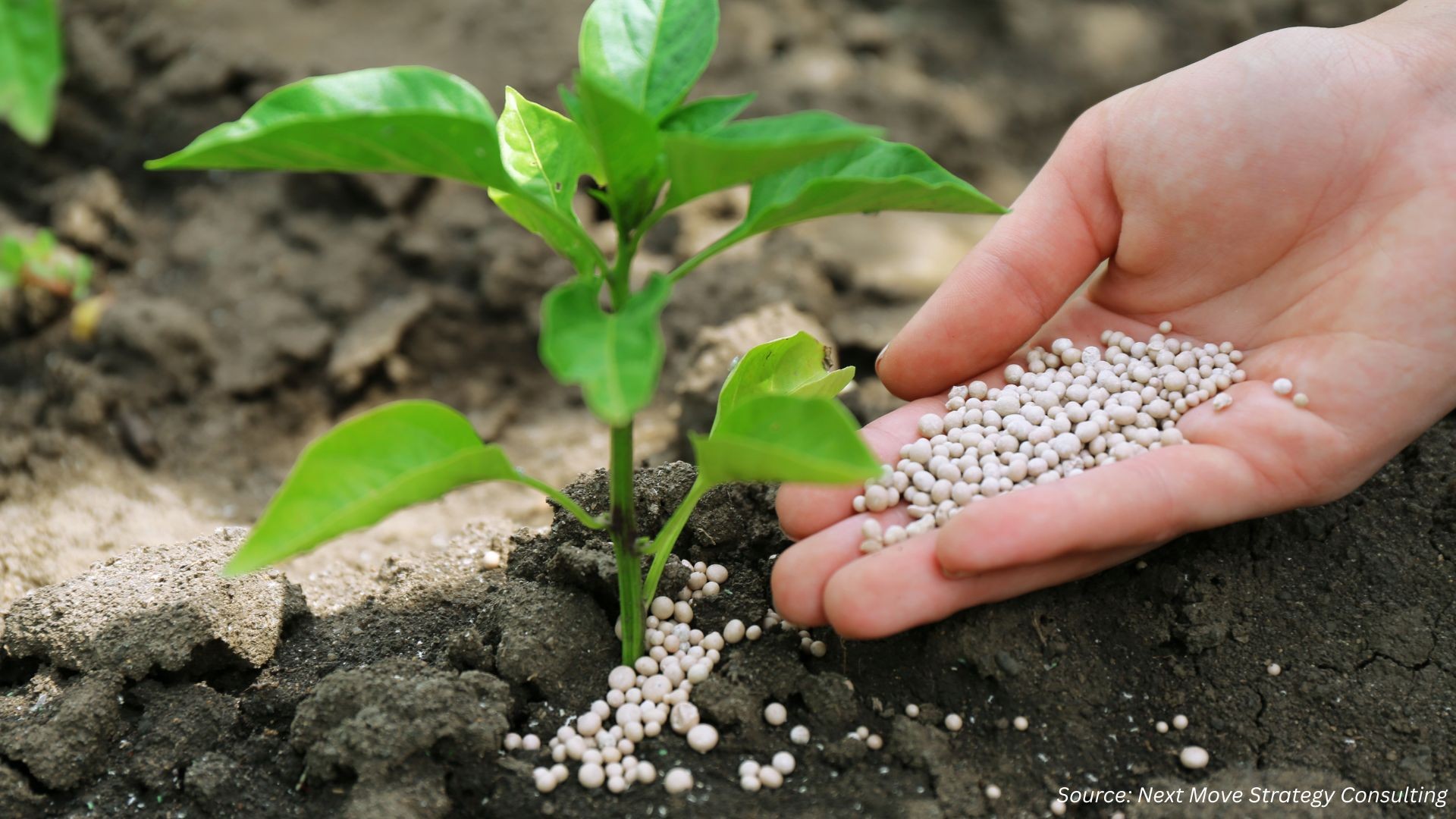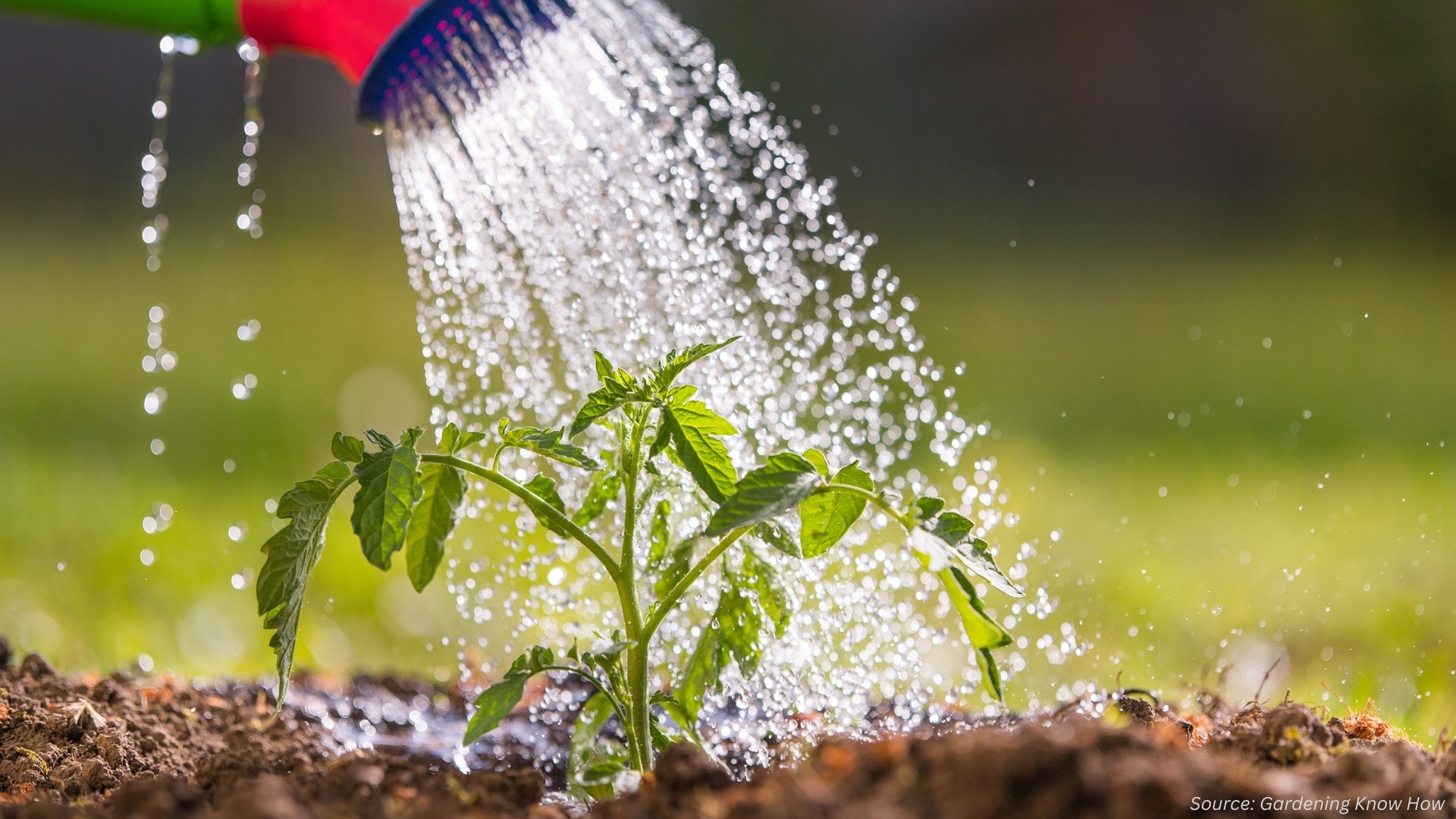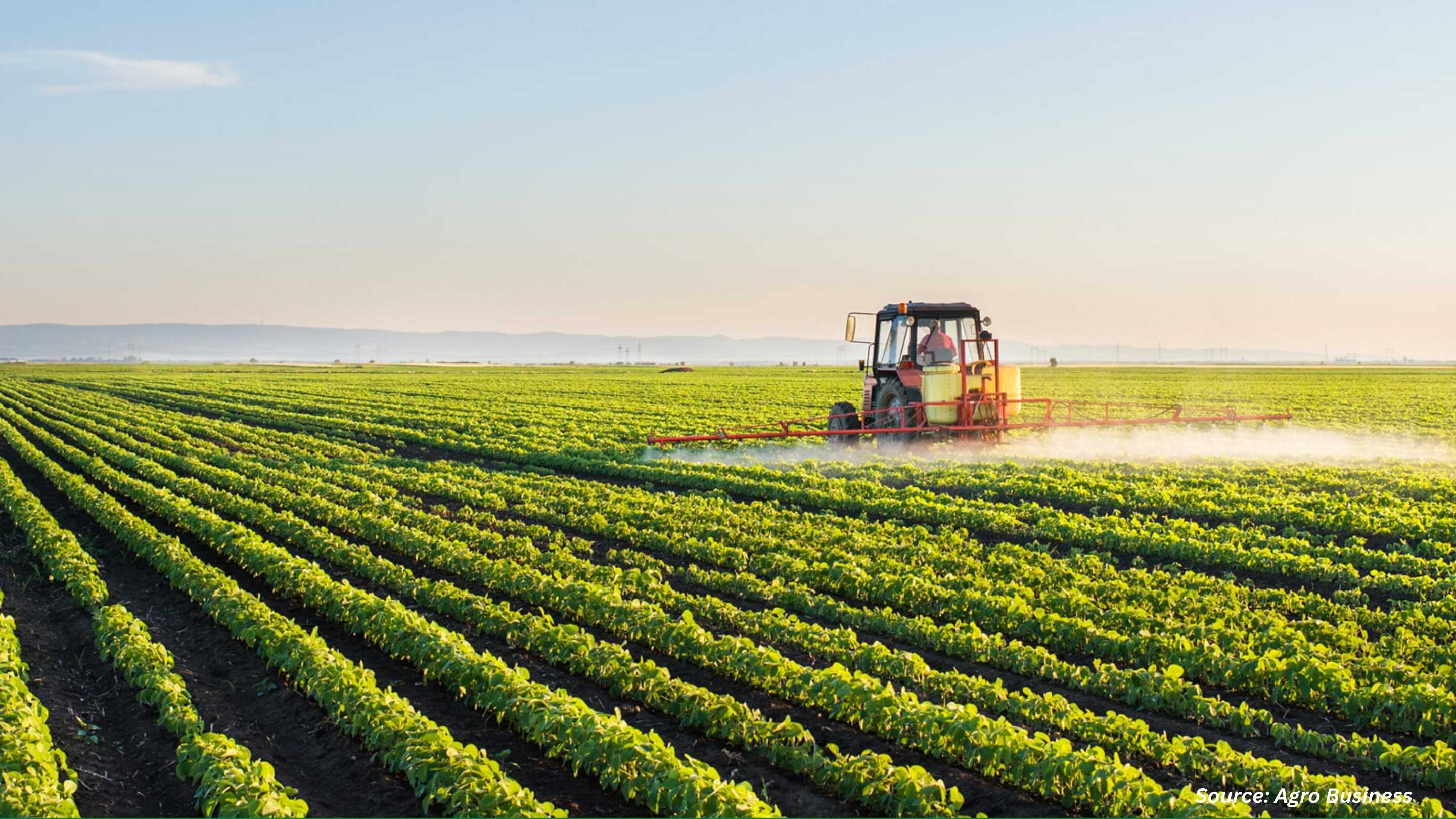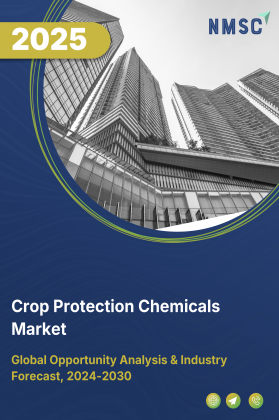
Crop Protection Chemicals Market by Product Type (Herbicides, Insecticides, Fungicides, Biopesticides, Nematicides, Rodenticides, Molluscicides, Others), by Crop Type (Cereals & Grains, Oilseeds & Pulses, Others), by Formulation (Liquid, Dry), by Source (Synthetic Chemicals, Natural-Based), by End-Use Application (Foliar Spray, Post-Harvest Treatment, Soil Treatment, Seed Treatment, Chemigation, Fumigation, Others) – Global Opportunity Analysis and Industry Forecast, 2025–2030.
Industry Overview
The global Crop Protection Chemicals Market size was valued at USD 91.25 billion in 2024 and is predicted to reach USD 96.99 billion by the end of 2025. The industry is predicted to reach USD 131.65 billion by 2030 with a CAGR of 6.3% from 2025 to 2030.
The market is experiencing steady growth, driven by increasing global population, declining arable land, and the rising cultivation of high-value crops. As demand for food continues to rise, farmers are under pressure to boost crop yields on limited land, leading to greater reliance on herbicides, insecticides, and fungicides to protect against pests, diseases, and weeds. The shift toward more intensive farming practices further supports this demand.
However, growing environmental and health concerns regarding synthetic chemicals have led to stricter regulations and a stronger push for safer alternatives. This has opened up significant opportunities for biopesticides, which offer eco-friendly and effective pest control, marking a shift toward more sustainable crop protection solutions.
Rising Population Growth Drives the Market Expansion
Population growth remains a key driver of the crop protection chemicals market growth, as it directly contributes to the rising demand for food production. According to the World Bank, the U.S. population growth rate increased by 1% in 2024, reflecting a broader trend of demographic expansion that puts additional pressure on agricultural systems.
As more people require food, farmers must boost crop yields despite limited arable land and growing environmental constraints. To achieve this, they increasingly depend on crop protection chemicals, such as herbicides, insecticides, and fungicides, to defend crops against pests, diseases, and weeds. This growing reliance on chemical solutions to ensure food security and agricultural efficiency is driving market demand across both developed and developing countries.
Declining Arable Land Drives Demand for Crop Protection Chemicals
The increasing shift of populations toward urban areas is contributing to a decline in available arable land, making it a key driver of the market. According to the World Bank, in 2024, the urban population accounted for approximately 84% of the total population in the United States and 37% in India. This trend reflects the ongoing expansion of cities, at the expense of agricultural land.
As cultivable land becomes scarcer, there is growing pressure on farmers to maximize crop yields on limited plots. To maintain productivity and reduce losses from pests, weeds, and diseases, the use of crop protection chemicals, such as herbicides, insecticides, and fungicides, is becoming increasingly essential. This necessity to achieve higher output from shrinking farmland is accelerating the demand for crop protection solutions globally.
Adoption of High-Value Crops Boost Demand for Crop Protection Chemicals
The growing adoption of high-value crops, such as fruits, vegetables, spices, and ornamental plants, is a key driver of the market growth. These crops typically offer higher returns compared to staple grains but are also more susceptible to pests, diseases, and environmental stress.
As farmers shift toward cultivating these economically lucrative crops to increase profitability and meet changing consumer preferences, they require more intensive crop management practices. This includes greater reliance on crop protection chemicals to safeguard quality, reduce losses, and maintain consistent supply.
The higher economic risk associated with high-value crops makes effective pest and disease control critical, thereby fuelling the demand for a wide range of chemical solutions across both open-field and protected farming systems.
Environmental and Health Concerns Limits the Market Growth
One of the major restraints on the crop protection chemicals market expansion is the growing concern over their environmental and health impacts. Many synthetic pesticides and herbicides have been linked to soil degradation, water contamination, harm to non-target species (including pollinators), and adverse effects on human health. These risks have prompted stricter regulations and ban on certain chemical formulations in various countries.
Additionally, rising consumer demand for organic and residue-free food is pressuring farmers to reduce chemical usage. As a result, regulatory hurdles, public opposition, and environmental sustainability concerns are collectively challenging market growth and encouraging a shift toward alternative solutions such as biopesticides and integrated pest management (IPM).
Introduction of Biopesticides Creates New Market Opportunities
A significant growth opportunity in the market is the increasing demand for biopesticides or biofertilizers, which are naturally derived solutions for controlling pests and diseases. As environmental regulations become stricter and consumer preference shifts toward sustainable and organic farming practices, biopesticides are gaining traction as safer, eco-friendly alternatives to synthetic chemicals.
Supported by advancements in biotechnology and microbial research, biopesticides offer targeted pest control with minimal environmental impact and reduced risk to human health. This trend opens up significant growth potential for companies investing in innovative, green crop protection solutions, particularly in emerging markets and high-value crop segments.
Market Segmentations and Scope of the Study
The crop protection chemicals market report is segmented by product type, crop type, formulation, source, end-use application and regions. Product types include herbicides such as selective, non-selective, glyphosate, atrazine, 2,4-D, and others; insecticides like malathion, carbaryl, chlorpyrifos; fungicides such as chlorothalonil, sulfur, PCNB, maneb; and others. Crop types include cereals and grains, oilseeds and pulses, fruits and vegetables, commercial crops and others. Formulations are available in liquid and dry forms. Based on source, products are either synthetic or natural-based. End-use applications include foliar spray, soil treatment, seed treatment, post-harvest treatment, and others. The market is analysed across North America, Europe, Asia-Pacific, and the Rest of the World.
Geographical Analysis
In North America, one of the key drivers of the market is the rapid adoption of precision agriculture technologies. Farmers in the region are increasingly using tools such as GPS-guided equipment, drone-based crop monitoring, and data analytics to apply crop protection chemicals more efficiently and accurately.
These technologies help reduce chemical waste, lower input costs, and improve the effectiveness of pest and disease control. As a result, the integration of precision farming methods is boosting the demand for advanced and targeted crop protection solutions across the U.S. and Canada.
In Europe, a major driver of the crop protection chemicals market share is the strict regulatory framework that promotes the development and adoption of safer, more sustainable crop protection solutions. The European Union’s policies, such as the Farm to Fork Strategy and the Sustainable Use Directive, aim to reduce the use of hazardous pesticides and encourage environmentally friendly alternatives.
This regulatory pressure is driving innovation among agrochemical companies to develop low-toxicity formulations, biopesticides, and integrated pest management (IPM) solutions. As a result, the demand for compliant and eco-conscious crop protection products is steadily increasing across the region.
In the Asia-Pacific region, a key driver of the market is the rapid expansion of agricultural activities to meet the growing food demand from a large and increasingly urbanized population. Countries like China, India, and Southeast Asian nations are witnessing rising pressure on their agricultural sectors to boost productivity and reduce crop losses.
To address these challenges, farmers are increasingly adopting crop protection chemicals to safeguard yields from pests, diseases, and weeds. Additionally, government support through subsidies, training programs, and easier access to agrochemicals is further accelerating market growth in the region.
In the Rest of the World (RoW), a key driver of the sector is the rising investment in commercial and export-oriented agriculture. Countries such as Brazil and Argentina are expanding large-scale farming operations to supply global markets with soybeans, coffee, sugar, and other high-demand crops. This shift toward intensive farming increases the need for effective crop protection to ensure high yields and meet international quality standards.
Additionally, growing awareness among farmers about the benefits of using pesticides and herbicides, along with support from international agricultural development programs, is fuelling demand for crop protection chemicals across these emerging regions.
Strategic Developments in the Crop Protection Chemicals Industry
Key players in the industry are actively pursuing product innovation, strategic collaborations, and sustainable solutions to strengthen their global presence and address evolving agricultural needs.
-
In July 2025, BASF is coordinating with regulators following the EPA’s proposal to re-approve dicamba-based herbicides, which also involves approval submissions from Bayer and Syngenta.
-
In June 2025, Syngenta introduced a breakthrough herbicide, metproxybicyclone, officially recognized as a new ACCase-inhibiting subclass, signifying a major advancement in weed resistance management.
-
In June 2025, FMC entered a strategic collaboration with Corteva Agriscience to expand access to its fluindapyr fungicide (Adastrio®), targeting corn and soybean growers. Corteva plans to launch a fluindapyr-based product in 2026.
-
In June 2025, Syngenta entered a joint venture with a European biocontrol startup to commercialize next-generation biopesticides. These aim to control resistant pests effectively while preserving beneficial insect populations, a key advancement in sustainable pest management.
-
In April 2025, UPL partnered with Provivi to bring an eco-friendly pheromone-based pest control solution, the FAW Eco-Dispenser, to Mexican growers, supporting sustainable pest management.
Key Benefits
-
The report provides quantitative analysis and estimations of the market from 2025 to 2030, which assists in identifying the prevailing industry opportunities.
-
The study comprises a deep-dive analysis of the current and future crop protection chemicals market trends to depict prevalent investment pockets in the sector.
-
Information related to key drivers, restraints, and opportunities and their impact on the market is provided in the report.
-
Competitive analysis of the key players, along with their market share is provided in the report.
-
SWOT analysis and Porters Five Forces model is elaborated in the study.
-
Value chain analysis in the market study provides a clear picture of roles of stakeholders.
Crop Protection Chemicals Market Key Segments
By Product Type
-
Herbicides
-
Selective
-
Non-selective
-
Glyphosate
-
Atrazine
-
2,4-D
-
Others
-
-
Insecticides
-
Malathion
-
Carbaryl
-
Chlorpyrifos
-
Others
-
-
Fungicides
-
Chlorathalonil
-
Sulfur
-
PCNB
-
Maneb
-
Others
-
-
Biopesticides
-
Nematicides
-
Rodenticides
-
Molluscicides
-
Others
By Crop Type
-
Cereals & Grains
-
Solid
-
Oilseeds & Pulses
-
Fruits & Vegetables
-
Commercial Crops
-
Cotton
-
Sugarcane
-
Coffee
-
-
Turf & Ornamentals
-
Others
By Formulation
-
Liquid
-
Emulsifiable Concentrates
-
Suspension Concentrates
-
Soluble Liquids
-
-
Dry
-
Wettable Powders
-
Granules
-
Dustable Powders
-
By Source
-
Synthetic Chemicals
-
Natural-Based
By End Use Application
-
Foliar Spray
-
Post-harvest Treatment
-
Soil Treatment
-
Seed Treatment
-
Chemigation
-
Fumigation
-
Others
By Region
-
North America
-
The U.S.
-
Canada
-
Mexico
-
-
Europe
-
The UK
-
Germany
-
France
-
Italy
-
Spain
-
Denmark
-
Netherlands
-
Finland
-
Sweden
-
Norway
-
Russia
-
Rest of Europe
-
-
Asia-Pacific
-
China
-
Japan
-
India
-
South Korea
-
Australia
-
Indonesia
-
Singapore
-
Taiwan
-
Thailand
-
Rest of Asia-Pacific
-
-
RoW
-
Latin America
-
Middle East
-
Africa
-
Key Players
-
BASF SE
-
TERRALINK HORTICULTURE INC.
-
Syngenta AG
-
Corteva Agriscience
-
FMC Corporation
-
NUTRIEN AG Solutions
-
PREMIER TECH HOME & GARDEN
-
Nufarm Limited
-
Gowan Company
-
Albaugh LLC
-
PI Industries
-
Sharda Cropchem Ltd.
-
Rallis India Ltd.
Report Scope and Segmentation
|
Parameters |
Details |
|
Market Size in 2025 |
USD 96.99 Billion |
|
Revenue Forecast in 2030 |
USD 131.65 Billion |
|
Growth Rate |
CAGR of 6.3% from 2025 to 2030 |
|
Analysis Period |
2024–2030 |
|
Base Year Considered |
2024 |
|
Forecast Period |
2025–2030 |
|
Market Size Estimation |
Billion (USD) |
|
Growth Factors |
|
|
Countries Covered |
28 |
|
Companies Profiled |
15 |
|
Market Share |
Available for 10 companies |
|
Customization Scope |
Free customization (equivalent up to 80 working hours of analysts) after purchase. Addition or alteration to country, regional, and segment scope. |
|
Pricing and Purchase Options |
Avail customized purchase options to meet your exact research needs |

















 Speak to Our Analyst
Speak to Our Analyst



